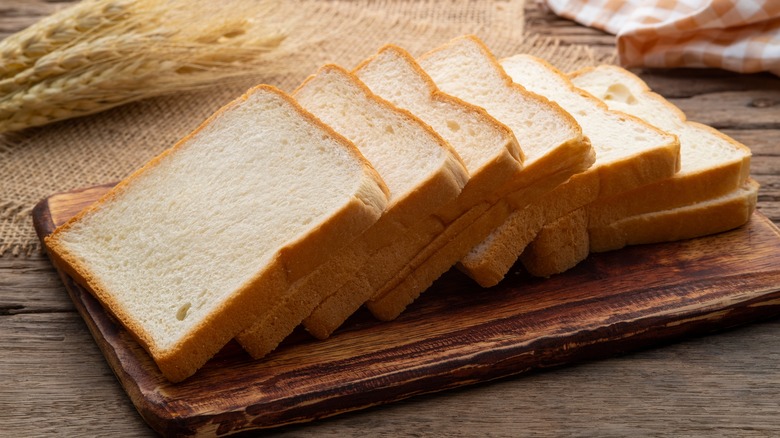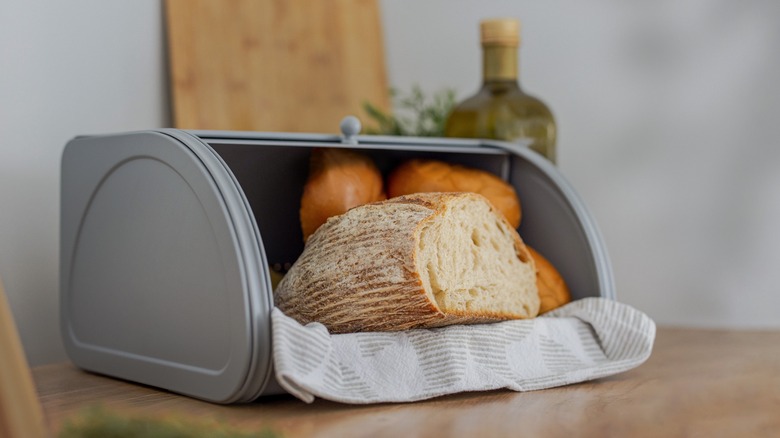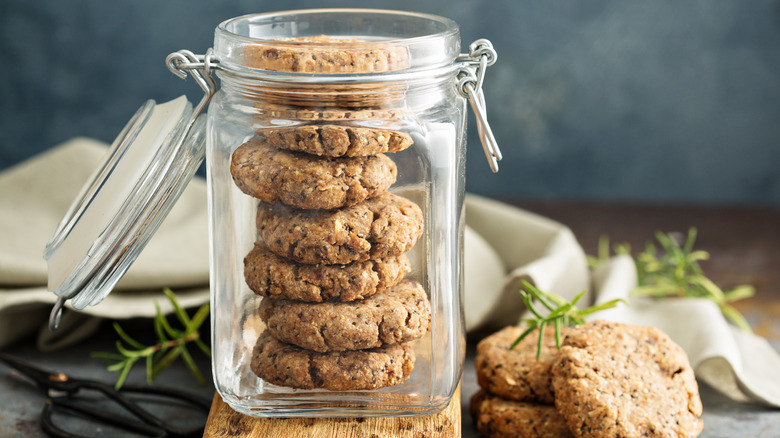Store A Sacrificial Bread Slice With Your Loaf To Control Mold Growth
While bread is an invaluable pantry staple to many, it can also be tricky to store a big supply for longer periods of time. When left out on the counter, a loaf of bread might only last three to four days before going stale, especially without preservatives. Within just five days, that same loaf could be speckled with mold growth, meaning you'll have to toss it out. Fortunately, there are a few simple steps you can take to give your bread a longer lifespan.
Perhaps the easiest method is to store your loaf in a bread box with a single additional slice of bread. Bread boxes allow air to flow through, keeping the loaf dry and cool, and an extra slice in the box provides additional protection from mold growth. Because a single slice of bread has more surface area exposed than the rest of the loaf, it will absorb any excess moisture in the box. Moisture is what causes mold to form, so drawing it away will protect your bread. What's more, this is an excellent use for the end slices of bread loaves if you don't like eating them. Just save these slices to store with your next loaf of bread, or take the end piece right off the loaf and use it as your preservation tool.
Keep your bread stored in optimal conditions
The bread slice hack is a good method to use for keeping bread fresh, but you can further extend the lifespan of your loaf by storing it in the proper conditions. One common food storage mistake is storing your bread (be it in a box or a bag) next to appliances, such as your toaster or stove. When you use these appliances, the heat they give off can combine with the moisture in the bread to create an ideal environment for mold growth. Instead, keep bread someplace cool and dry, like a pantry or cupboard.
The shelf life of your bread can also be heavily influenced by the material you use for storage. Storing bread in plastic, for example, doesn't provide enough airflow, which is necessary to keep bread at a low temperature with little humidity. Conversely, wrapping your loaf of bread in paper or cotton cloth allows the loaf to "breathe" while also maintaining the right level of moisture. Do your bread a favor and take it out of the plastic packaging it's sold in, and wrap it in a more breathable material. Following all these guidelines, you should be able to stave off mold growth for at least a week.
Use the bread slice trick for cookies, too
Not only does the aforementioned bread slice hack work for keeping a whole loaf fresh, but it can also help preserve other baked goods. For instance, say you've made a batch of soft chocolate chip or oatmeal cookies. In regular storage conditions, those cookies will dry out and turn hard and crunchy in a matter of days, but add a slice of bread to your cookie jar or container, and it's a whole different story.
As you might expect, the slice of bread attracts moisture. However, when stored in an airtight cookie jar, the bread holds the moisture close to the cookies, rather than wicking it away. In turn, the cookies can absorb the moisture they need to remain soft. That being said, you should only use white sandwich bread for this hack, as varieties like wheat or pumpernickel (or flavored loaves like rosemary or garlic bread) will impose their strong flavors into your cookies –- not exactly an ideal flavor pairing.



